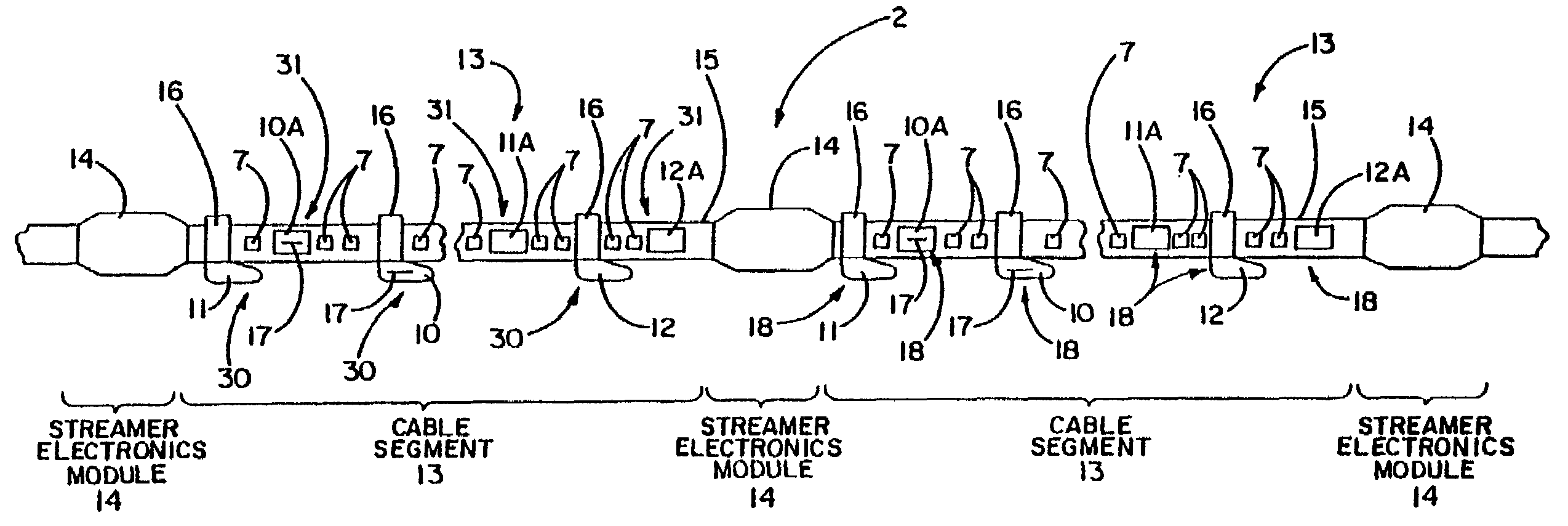Electrical power distribution and communication system for an underwater cable
a technology of electrical power distribution and communication system, applied in the direction of cables, insulated conductors, instruments, etc., can solve the problems of high inefficiency of battery maintenance process, frequent undesirable use of batteries as primary power sources, and unwanted downtime, so as to enhance the reliability of seismic streamer cable assemblies and improve structure and/or operation
- Summary
- Abstract
- Description
- Claims
- Application Information
AI Technical Summary
Benefits of technology
Problems solved by technology
Method used
Image
Examples
Embodiment Construction
[0112]Referring to FIGS. 1 and 2, a typical marine seismic data acquisition system 1 may include a survey vessel 8 which tows one or more underwater streamer cables such as underwater cable 2. The underwater cable 2 may include one or more sections such as lead-in section and underwater section 4. The lead-in section 3 is typically connected between the underwater section 4 and dry-end electronics 5. The dry-end electronics 5 are typically disposed on the survey vessel 8 and may include a plurality of data acquisition, processing, storage, and control devices. In some embodiments, it may be desirable to couple first and second ends of the underwater section 4 to first and second buoys 6, respectively.
[0113]The underwater cable 2 may be a continuous streamer cable or be discontinuous and divided into a plurality of cable segments. For example, FIG. 2 shows a portion of an underwater cable 2 which may be divided into a plurality of cable segments 13 by a plurality of streamer electron...
PUM
 Login to View More
Login to View More Abstract
Description
Claims
Application Information
 Login to View More
Login to View More - R&D
- Intellectual Property
- Life Sciences
- Materials
- Tech Scout
- Unparalleled Data Quality
- Higher Quality Content
- 60% Fewer Hallucinations
Browse by: Latest US Patents, China's latest patents, Technical Efficacy Thesaurus, Application Domain, Technology Topic, Popular Technical Reports.
© 2025 PatSnap. All rights reserved.Legal|Privacy policy|Modern Slavery Act Transparency Statement|Sitemap|About US| Contact US: help@patsnap.com



